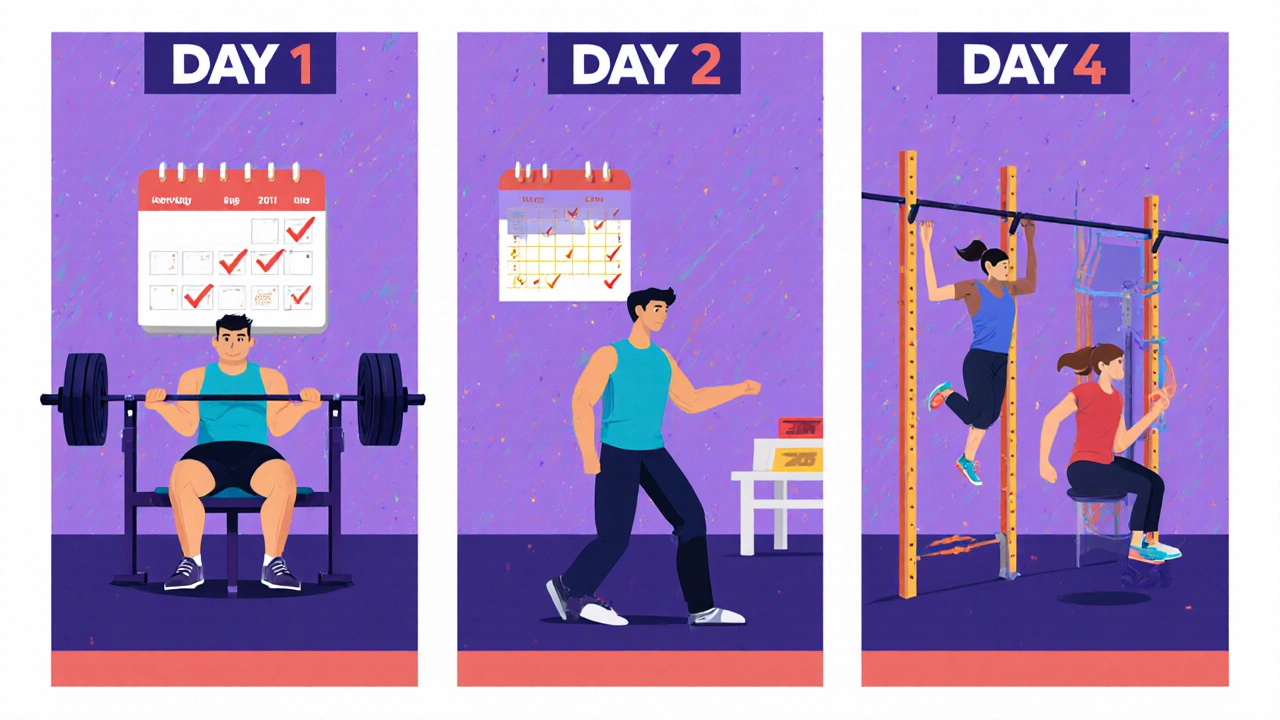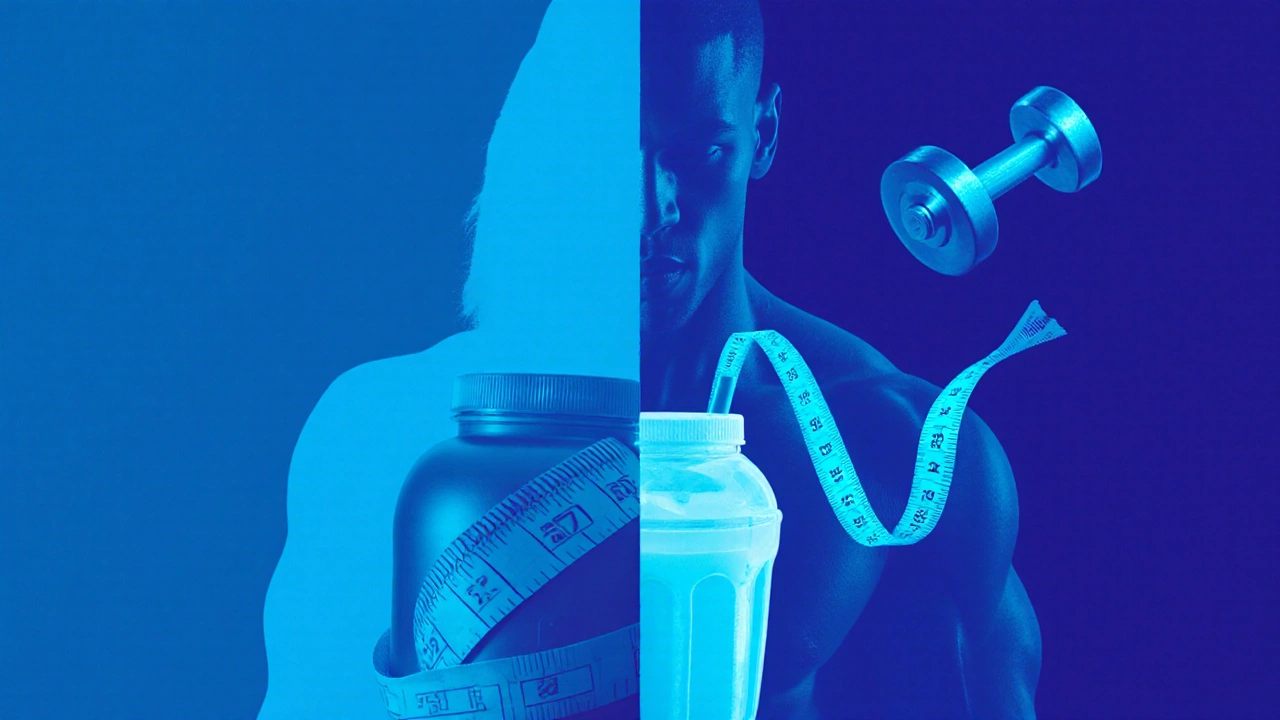
The article recommends 1.6-2.2 grams of protein per kilogram of body weight daily for strength training. This calculator helps determine your precise daily protein needs based on your body weight and training goals.
Minimum: grams/day
Maximum: grams/day
Total range: grams/day
For strength training, aim for the higher end of this range to support muscle recovery and growth.
Protein sources:
100g chicken breast = 31g protein
1 cup Greek yogurt = 17g protein
30g whey protein = 24g protein
Imagine logging your first workout and then, four weeks later, staring at the mirror or a progress photo and actually seeing change. That’s the promise of a focused strength training plan, but the details can feel fuzzy. This guide walks you through a realistic month of training, shows how to structure each week, and tells you what numbers to track so you know you’re moving forward.
Before you even lift a dumbbell, decide what success looks like for you. Are you chasing a 5‑kg increase in squat weight, aiming for a tighter waist, or simply wanting to feel stronger in daily tasks? Write the goal down, attach a deadline (the end of the month), and pick a measurable way to gauge it-whether it’s a weight‑lifted figure, a body‑measurement, or a photo comparison.
Consistency beats intensity for beginners, so most one‑month programs stick to three‑to‑four sessions per week. Below is a basic layout that balances muscle‑building work with recovery.
Each session focuses on Compound Exercises are movements that engage multiple muscle groups at once, allowing you to lift heavier loads and stimulate more muscle fibers. These form the backbone of any efficient plan.
To keep gaining strength, you must gradually increase the stress on your muscles. This principle, called Progressive Overload the systematic increase of weight, reps, or volume over time to stimulate muscle adaptation, can be applied in three easy ways:
The key is to move forward in small, trackable steps rather than chasing big jumps that risk injury.
What gets measured gets improved. Keep a simple log that captures:
When you look back after four weeks, you’ll spot patterns: maybe the bench press jumped from 60 kg to 70 kg while your waist shrank a centimeter. Those concrete wins fuel motivation.

Training without fuel is like trying to run a car on empty. The most important macro for muscle repair is protein. Aim for Protein Intake roughly 1.6-2.2 grams of protein per kilogram of body weight daily, spread across meals. For a 75‑kg person, that’s about 120‑165 g per day.
Combine protein with moderate carbs (to replenish glycogen) and healthy fats. A typical meal could be chicken breast, brown rice, and avocado. Stay hydrated-2-3 L of water daily-and consider a multivitamin if you’re cutting calories.
After three weeks of steady gains, your nervous system and muscles may need a brief respite. A deload week-reducing volume by 40‑50 % while keeping intensity high-helps prevent overtraining and keeps you fresh for the final push.
During the deload, replace heavy sets with lighter technique work, focus on mobility, and get extra sleep. Many lifters report coming back stronger after a well‑executed deload.
| Aspect | Beginner (3 days) | Intermediate (4 days) |
|---|---|---|
| Primary Focus | Full‑body compound lifts | Upper/Lower split |
| Sets per Exercise | 3‑4 | 4‑5 |
| Rest Days | 2‑3 (incl. active) | 2 (active) |
| Progression Rate | +2 kg weekly | +5 kg bi‑weekly |
| Typical Volume | 45‑60 min | 60‑75 min |
Pick the split that matches your schedule and current strength level. Beginners benefit from full‑body sessions to learn movement patterns, while intermediates can handle more volume and frequency.

Here’s a visual of how the month could look. Feel free to shift days around as long as you keep at least one full rest day between heavy sessions.
At the end of Week 4, re‑test your one‑rep maxes or 5‑rep totals. The differences will illustrate exactly what a month of focused training can achieve.
Three to four sessions is ideal for most beginners. It provides enough stimulus without overwhelming recovery capacity.
Light cardio (20‑30 minutes) on rest days helps circulation and keeps body fat in check, but it shouldn’t dominate your schedule.
Use a simple spreadsheet or a workout‑log app. Record exercise, weight, reps, sets, and date. Review weekly to spot trends.
Aim for 1.6-2.2 g per kilogram of body weight each day, spread over 3‑5 meals.
A deload after 3-4 weeks of consistent training helps prevent plateaus and reduces injury risk.